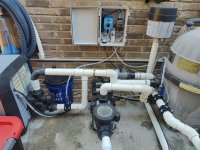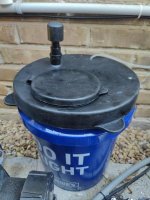- Aug 19, 2023
- 21
- Pool Size
- 16500
- Surface
- Plaster
- Chlorine
- Salt Water Generator
- SWG Type
- Hayward Aqua Rite Pro (T-15)
Only 3 weeks after the initial fill-up, but I can already tell that I will want to tackle some type of automation for pH control. Tired of handling acid every other day already. Can't even imagine how I'll feel in a year. Anyway, what I'm looking for is:
- advice/comments from those that have tried it. what did you try and how did you like it?
- thoughts on CO2 vs Acid feed vs Other?
- links to any good threads discussing the above
Edit by Jim R.
- advice/comments from those that have tried it. what did you try and how did you like it?
- thoughts on CO2 vs Acid feed vs Other?
- links to any good threads discussing the above
Edit by Jim R.



